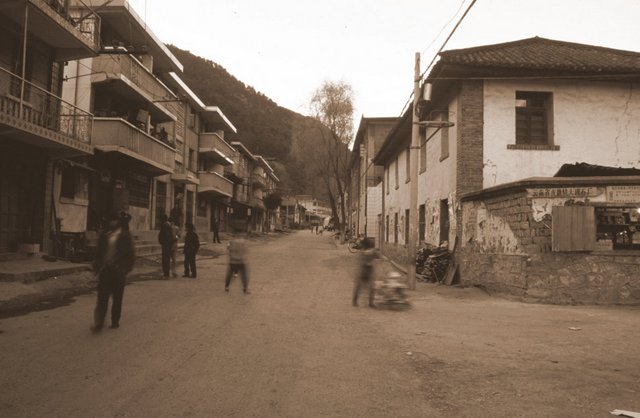I saw this over at Samakamlao, that web site mostly for Laotians in Laos and overseas Lao. I did a simple copy and paste, even the little graphic below. No link to The Nation.
Of the nine other members of Asean, Thailand is most culturally, linguistically and economically linked to the Lao People’s Democratic Republic. The economic interdependence of the two nations is particularly important and Laos is clearly part of the ”Baht Zone”. The baht can be used easily anywhere in Laos.
Thailand critically needs energy imports from Laos and the Lao in turn need many consumer goods from Thailand. Also approximately one third of the Thai population has Lao cultural and linguistic roots.
Often Thais like to define their relationship with the Lao as “brothers and sisters”. but the Lao scholar and historian, Ajarn Mayoury Ngaosyvathn, instead calls simply for the nations to be close and friendly neighbours.
As we all know Thailand is amazing in many ways, but Laos is also amazing. What is most remarkable is that Laos has survived as a political and cultural identity despite being landlocked and surrounded by five powerful and much larger neighbours, namely, China, Vietnam, Myanmar, Thailand, and Cambodia.
Unfortunately there are many Thai misunderstandings about Laos and the Lao. First, many think that the Isaan (Northeast) language and Lao language arethe same. They are indeed similar but not the same. Once they were the same, but diverged over time because of 1) French colonialism, 2) communism, and 3) the Thaiification of the Isaan language.
Nearly all geographic and mathematics terminology in the Lao language, for example, is Frenchderived. If a person asks for “galaem” in Isaan, they will normally get a blank stare. “Galaem” is the Lao word for ice cream.
A second misunderstanding relates to the phrase “mai mi arai” (there is nothing there) referring to Laos. Many Thai travel to Vientiane, Laos for just one day, not even staying the night. They shop at the ”morning” market, have lunch at a nice restaurant on the Mekong, and visit a couple of prominent temples. They have “done Laos”.
I once took a group of Thai students on a study tour of Laos for two months. At the beginning they could not fathom why we were spending two months in a place where “mai mi arai”. At the end of the two months, they indicated a desire to stay longer. Obviously over time they came to realise how much there was to learn about Laos.
The Thai history, geography, and social science curricula on Laos need to be reviewed and revised. Students, for example, should be exposed to both Thai and Lao perspectives on the historical relations between the two nations. They should examine King Chao Anu both as a villain (Thai perspective) and hero (Lao perspective).
They need to analyse critically why Laos became communist and why the new government significantly reformed the Lao language.
They need to be exposed to how the Thai and Lao languages are the same and differ. The word “Thai/tai” is particularly interesting. In Thai, it means free, while in Lao it means people. Tai Luang Pabang, means Luang Pabang people, not Thai people living there.
As part of both cultural and moral education (and given the growing influence and power of social media), students need to know that ethnic jokes aboutthe Lao and Isaan people are inappropriate. Some of the gross ethnic jokes I have heard about the Lao are unprintable here. Also celebrities in their interviews need to be culturally sensitive in their remarks about the Lao. Some unfortunate incidents have occurred in the past.
Thais need to study and be more aware of more important Lao scholars and writers such as the prominent historian Maha Sila Viravong (originally from Roi Et) and his three children, who are all noted writers, and Ajarns Pheuiphanh and Mayoury Ngaosyvathn, prolific Lao scholars and historians.
One enjoyable technique for teaching about the subtle differences between the two cultures is to present ambiguous images of both cultures and have students themselves ascertain which image is Thai and which is Lao. Watching critically movies such as “Sabai Di Luang Prabang” can also be a fun and effective way for Thais to learn about their important neighbour.
Even though most Lao can understand Thai, they deeply appreciate it when Thais make the effort to speak their language, which is relatively easy, giventhe similarities between the two languages. Dr Sumontha Promboon, former president of Srinakharinwirot University, made a great effort to speak and write Lao well, when serving as an ADB consultant in Laos. Her effort was extremely well received. HRH Princess Maha Chakri Sirindhorn, former Prime Minister Anand Panyarachun, Prof Charnwit Kasetsiri, Dr Prawese Wasi, and Sulak Sivaraksa have all shown impressive and exemplary cultural sensitivity in writing about and interacting with the Lao people.
What is most important for the future of ThaiLao relations in the AEC (ASEAN Economic Community) era is for Thais to enhance their cultural empathy of the Lao and their rich cultures and history.
Article originally published in The Nation, June 25, 2012
by Gerald W Fry, Distinguished International ProfessorDepartment of Organisational Leadership, Policy, and Development, University of Minnesotagwf@umn.edu






















